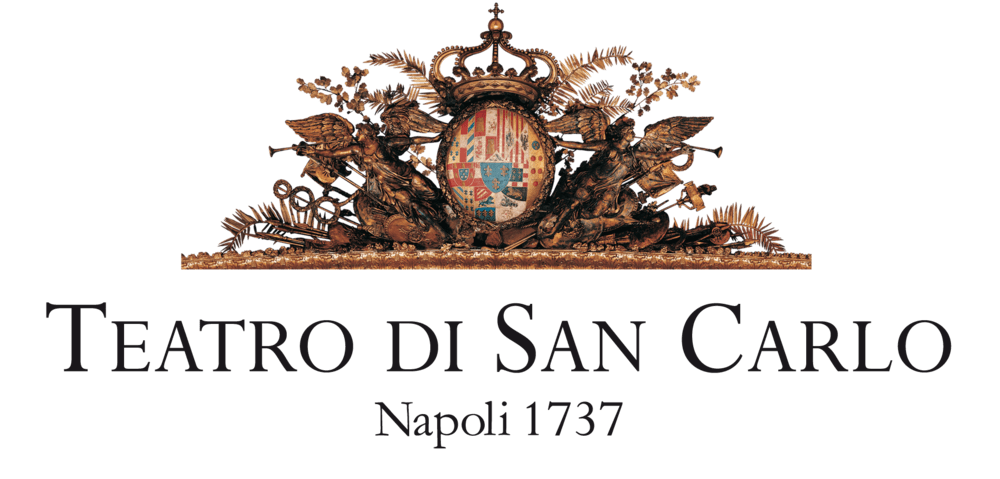Ballet of Teatro di San Carlo
The Teatro di San Carlo is the oldest Italian theatre. It was built in 1737 by King Charles of Bourbon (forty-one years before La Scala and fifty-one years before the Phoenix). It is considered “the most beautiful in the world” (Stendhal) for the splendour of its main hall. It has acquired a prominent place in the history of music over the centuries contributing to the formation of the Italian opera, from the eighteenth century ‘opera seria’ to the nineteenth century romantic melodrama. However, San Carlo has also made a decisive contribution to the art of dance.
Principal Dancers and Soloists
Before the opening of the new theatre, one of the conditions introduced by King Charles of Bourbon concerning the royal theatres, was included the limited use of the ‘comic intermezzo’. This traditionally superseded the acts of ‘opera seria’ for tradition, replaced it with choreographic action that presented the themes of the opera that was presented. With the opening of San Carlo, the custom was maintained and expanded to entire performances of dance, so that a “Neapolitan school” of this art could rapidly develop and establish itself hand in hand with the fame that the Theatre acquired in Europe. The first famous choreographer of the Teatro di San Carlo was Gaetano Grossetesta, author of the three dances that accompanied the opera that opened the Theatre on the 4th November 1737: Achille in Sciro by Domenico Sarro. The first dance, Marinai e Zingari, was performed before the beginning of the opera, the second one, Quattro Stagioni, during the break and the third one, I Credenzieri, after the conclusion. According to the custom of the time, the figure of the choreographer coincided with that of the composer and Grossetesta, who remained active at San Carlo for about 30 years, composed all the music of their regular ballet. This tradition was interrupted by Salvatore Viganò. Viganò, born in Naples, highly active at San Carlo in Naples, and for long time, also in the theatres of the major capitals (Paris, Vienna, London), is one of the key characters in the history of European dance. He initiated and imposed the dramatic evolution of the show dance that, thanks to him, arrived at the ‘balletto d’azione’ and then to ‘coreodramma’. He should be mentioned with other famous choreographers and dancers trained at San Carlo in Naples: Carlo Le Picq, Gaetano Gioia, Antonio Guerra e Carlo Blasis. Blasis, with his wife Annunziata Ramazzini, was called to teach in the early days of the Moscow Bolshoi School. Among the dancers were Amelia Brugnoli, Fanny Cerrito and Maria Taglioni who formed the most legendary trio of French romantic ballet dancers. Fanny Elssler was also present at the San Carlo in many seasons. Among the choreographers should also be noted Salvatore Taglioni, Maria’s uncle, who was director of dance at the Teatro di San Carlo from 1817 to 1860, and among the dancers, Carlotta Grisi and Elisa Vaquemoulin. In the late nineteenth and early twentieth century, dance at Teatro di San Carlo suffered the changing tastes of society and overcame the aesthetic crisis of Romanticism without seeking its own identity. It trusted to the national fashion, moreover respectable, of Manzotti’s festive ‘heavy weights’, including Ballo Excelsior and Pietro Micca. Nonetheless, it is expressed in international ‘star’ Ettorina Mazzucchelli. At the end of the war the Company of the Teatro di San Carlo gradually established its place by hosting the greatest soloists of our time, from Margot Fonteyn to Carla Fracci and Ekaterina Maximova, from Rudolf Nureyev to Vladimir Vassiliev, to whom the choreography of many performances have been entrusted. The contribution of Roland Petit has been significant in recent years and we fondly remember Il pipistrello and Duke Ellington Ballet. Following on from Petit, must be noted Luciano Cannito, Elizabeth Terabust, Anna Razzi, Giuseppe Carbone, Alessandra Panzavolta, Lienz Chang, Giuseppe Picone. The actual director is Clotilde Vayer.
Tickets
Check the availability
and choose your seat online!

